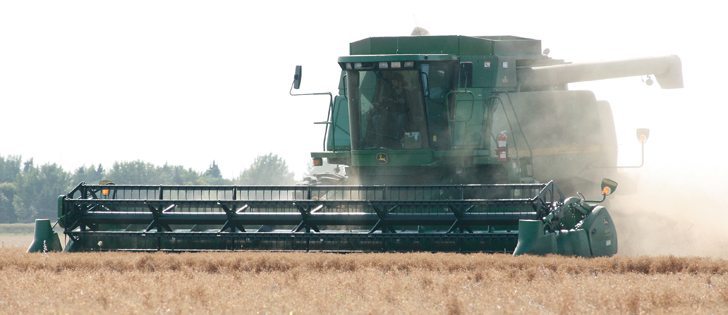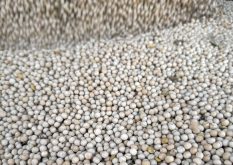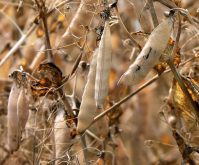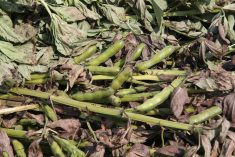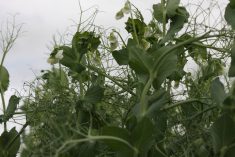Pulse crop yields will be well below the previous five-year average, says an industry official and a market analyst.
Carl Potts, executive director of Saskatchewan Pulse Growers, says pea yields will likely be 20 to 30 percent below normal.
The five-year average is 37 bushels per acre, so that means something in the range of 26 to 30 bu. per acre.
The situation isn’t as dire for the lentil crop. Potts said most market analysts believe the average lentil yield will be 1,300 pounds per acre, which would be 12 percent below the previous five-year average.
Read Also

Farm groups ask feds for export sales reporting
The Agricultural Producers Association of Saskatchewan and SaskCrops asks the federal government to create an Export Sales Reporting program.
Derek Squair, president of Agri-Trend Marketing, wasn’t quite as pessimistic but he agreed with the general trend.
“I’d say we’re 20 percent down on peas and 10 percent on lentils,” he said.
Lentils are better equipped to endure drought conditions than peas.
Squair said pulse yields are ex-tremely variable this year, which is why everybody is holding their breath waiting for the crop to come off. Preliminary harvest results from about 2,000 acres in southwestern Saskatchewan have been disappointing with peas averaging 25 bu. per acre and lentils 16 bu. per acre.
“Where we were expecting a 40 percent reduction in some of those areas it’s more like 50 percent, so it’s really getting low,” he said.
Potts expects yields to improve as harvest progresses into the east-central and northern portions of the province.
“Reports that we’ve heard about the crop are better in those areas.”
Saskatchewan Agriculture estimates 42 percent of the pea crop was in good to excellent condition as of July 27.
That is well below the 10-year average of 79 percent for that time of year.
The situation isn’t much better in Alberta. Alberta Agriculture is forecasting an average pea yield of 32.2 bu. per acre as of July 28.
That is 25 percent below the previous five-year average of 42.8 bu. per acre for that province.
Applying a 25 percent reduction to Agriculture Canada’s estimated pea yield for 2015-16 would result in a 2.44 million tonne pea crop. That would be the smallest crop since 2003.
Statistics Canada estimates growers planted 3.87 million acres of lentils, which would be 36 percent above the previous five-year average.
Many analysts believe the actual acreage is higher than that.
Using Agriculture Canada’s 3.64 million acre harvested area estimate and analyst’s 1,300 pounds per acre forecast results in a 2.15 million tonne lentil crop.
That would still be the second biggest in history next to the 2.17 million tonnes harvested in 2013.
“Overall supplies of lentils are expected to be good this year.”
Potts noted there are good marketing prospects for both crops and next to no carryout in the system.
“Export demand is very strong for both of those crops, which should help maintain prices at good levels for growers,” he said.
Potts expects good quality for both crops unless untimely harvest rains damage them.
Crops are earlier than normal, which improves the chance of avoiding a fall frost.


